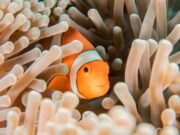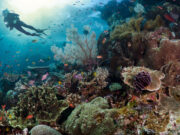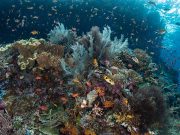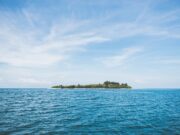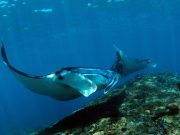Thailand has banned several sunscreen products from the country’s national marine parks. These contain chemical compounds proven to be harmful to coral reefs
People ignoring the ban can be fined 100,000 baht – nearly $3000 or £2200.
Any sunscreen containing octinoxate, oxybenzone, 4-methylbenzylid camphor or butylparaben are now outlawed.
Thailand is following the island nation of Palau, which in 2018 became the first country to ban sunscreen products containing environmentally harmful ingredients.
FIND A THAILAND DIVING TRIP
Which sunscreens are safer to use?
Look for ones without the ingredients mentioned below. A quick guide to whether it contains nano-particles is whether the sunscreen is clear or not. If it is clear, or in a spray, it probably contains nano-particles. If the ingredients state “uncoated” zinc oxide then these are larger particles (non-nano).
There are now many options for sunscreens which are less harmful to sea life, including:
Green People Sun Lotion
Odylique sunscreen
Badger Sunscreen
Bio Solis
Shade all-natural sunscreen
What harm do sunscreens do?
Marine biologists and environmentalists, including the U.S. National Oceanic and Atmospheric Administration (NOAA), say the banned substances can reduce the resiliency of ecosystems to climate change factors and, by themselves, prevent the recovery of degrading wildlife and habitats. The resulting damage to coral reefs, including coral bleaching, in the South Pacific, Caribbean, Australia, Israel, and elsewhere poses a threat to one-quarter of marine species, and threatens shorelines and vibrant tourism in affected areas.
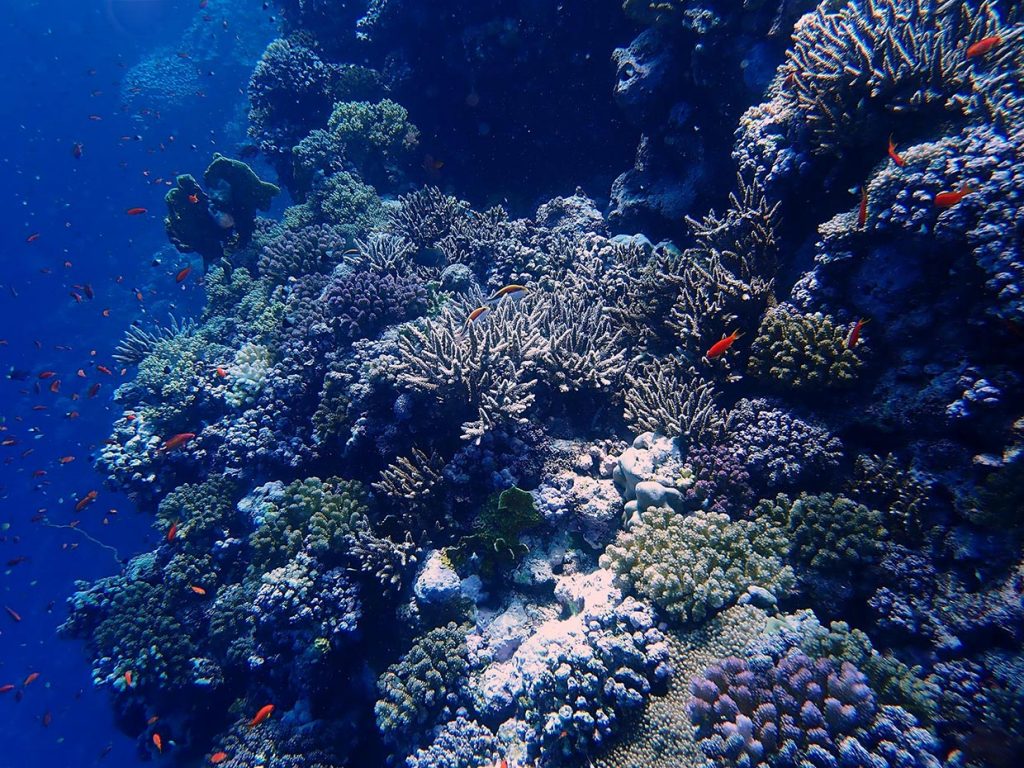
The chemicals in sunscreens filter out the passage of UV light, protecting a person’s skin from ultra-violet radiation. These UV filters are of two types: chemical (or organic), which absorb UV rays and include the banned substances, and physical (or inorganic) which reflect UV – for example minerals like zinc oxide. The inorganic filters are generally thought to be safer for marine life than the organic, but much more research needs to be done and there is some evidence that these also may be harmful.
Estimates vary for the amount of sunscreen washing into areas around coral reefs, but in a paper pubished in 2016 researchers estimated between 6000 and 14000 tons.
Nanoparticles
Nano particles are minute chemical substances, which are about 100,000 times smaller than the diameter of a human hair.
Titanium dioxide and zinc oxide nanoparticles are often used in sunscreens. They allow clear sunscreen which can be sprayed on. However, they produce significant amounts of hydrogen peroxide, a strong oxidizing agent that generates high levels of stress on reef-building corals and marine phytoplankton. They have also been shown to make sea urchin embryos more vulnerable to toxins.
You need to avoid nanoparticles if you are looking for a marine-friendly sunscreen.
Oxybenzone
Scientists have shown that Oxybenzone (also known as Benzophenone-2 or BP-2) increases the rate of coral bleaching. Additionally, the chemical damages the coral’s dna, affecting their reproduction. If that wasn’t enough other effects are to make juvenile corals become grossly deformed and encase themselves with their own skeletons. “We found that oxybenzone caused gross morphological deformities, DNA damage and endocrine disruption, which causes the coral to close up and die,” explains Prof. Ariel Kushmaro, head of the Environmental Biotechnology Lab at Ben-Gurion University.
Octinoxate, Butylparaben, 4-Methylbenzylidene Camphor
Another study, this time by Roberto Danovaro et al, named butylparaben, octinoxate and 4-methylbenzylidene camphor as being harmful to reefs.
Octocrylene
Octocrylene, which is also in some hair sprays and conditioners, accumulates in coral as fatty acid esters that could be t
References and Further Reading
Which sunscreens are safe for sea life and which should you avoid?, SCUBA News
Palau bans harmful sunscreens, SCUBA News
Downs, C.A., Kramarsky-Winter, E., Segal, R. et al. Arch Environ Contam Toxicol (2016) 70: 265. doi:10.1007/s00244-015-0227-7
Danovaro, Roberto; Bongiorni, Lucia; Corinaldesi, Cinzia; Giovannelli, Donato; Damiani, Elisabetta; et al. Environmental Health Perspectives; Research Triangle Park116.4 (Apr 2008): 441-7.
The impacts of sunscreen on coral reefs. National Park Service.
DME Slijkerman and M Keur. Sunscreen ecoproducts – Product claims, potential effects and environmental risks of applied UV filters, Wageningen Marine Research 2018.
Sunscreen and cosmetics compound may harm coral by altering fatty acids, American Chemistry Society 2019

